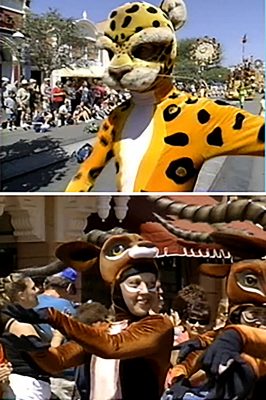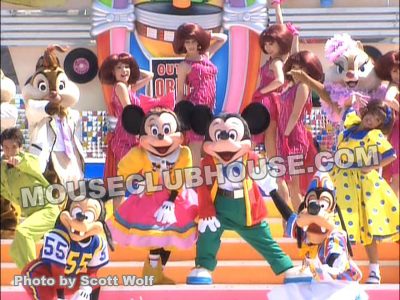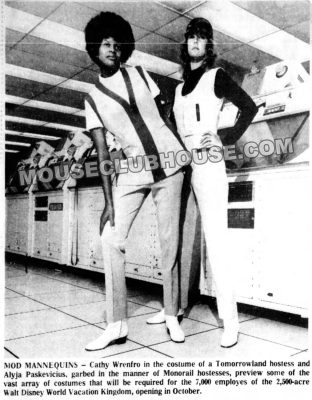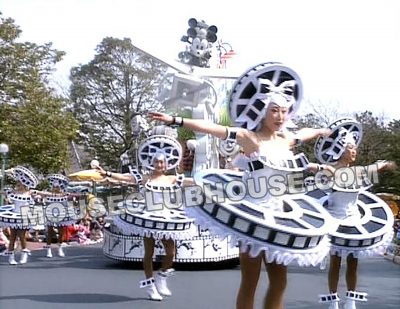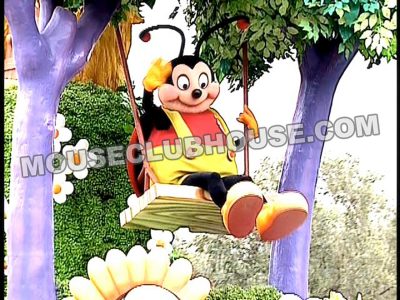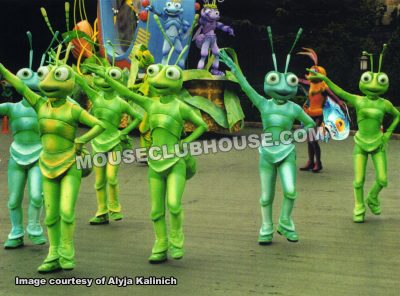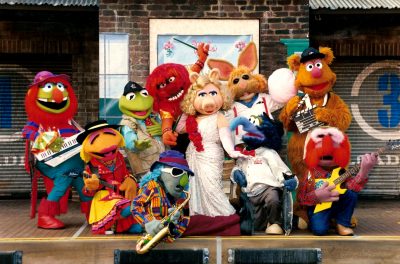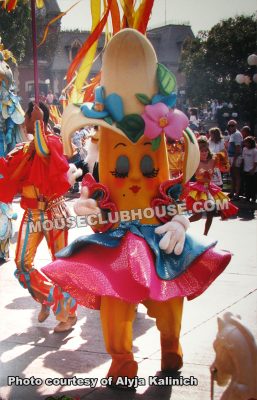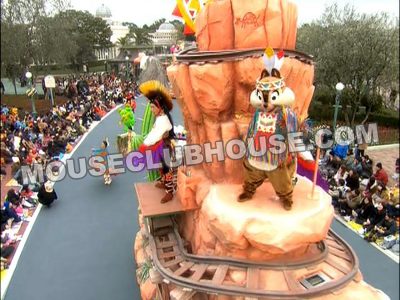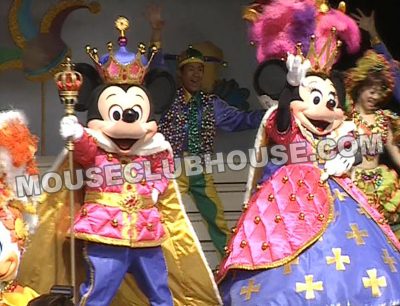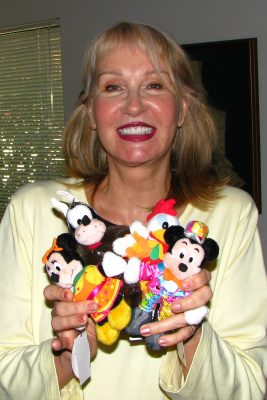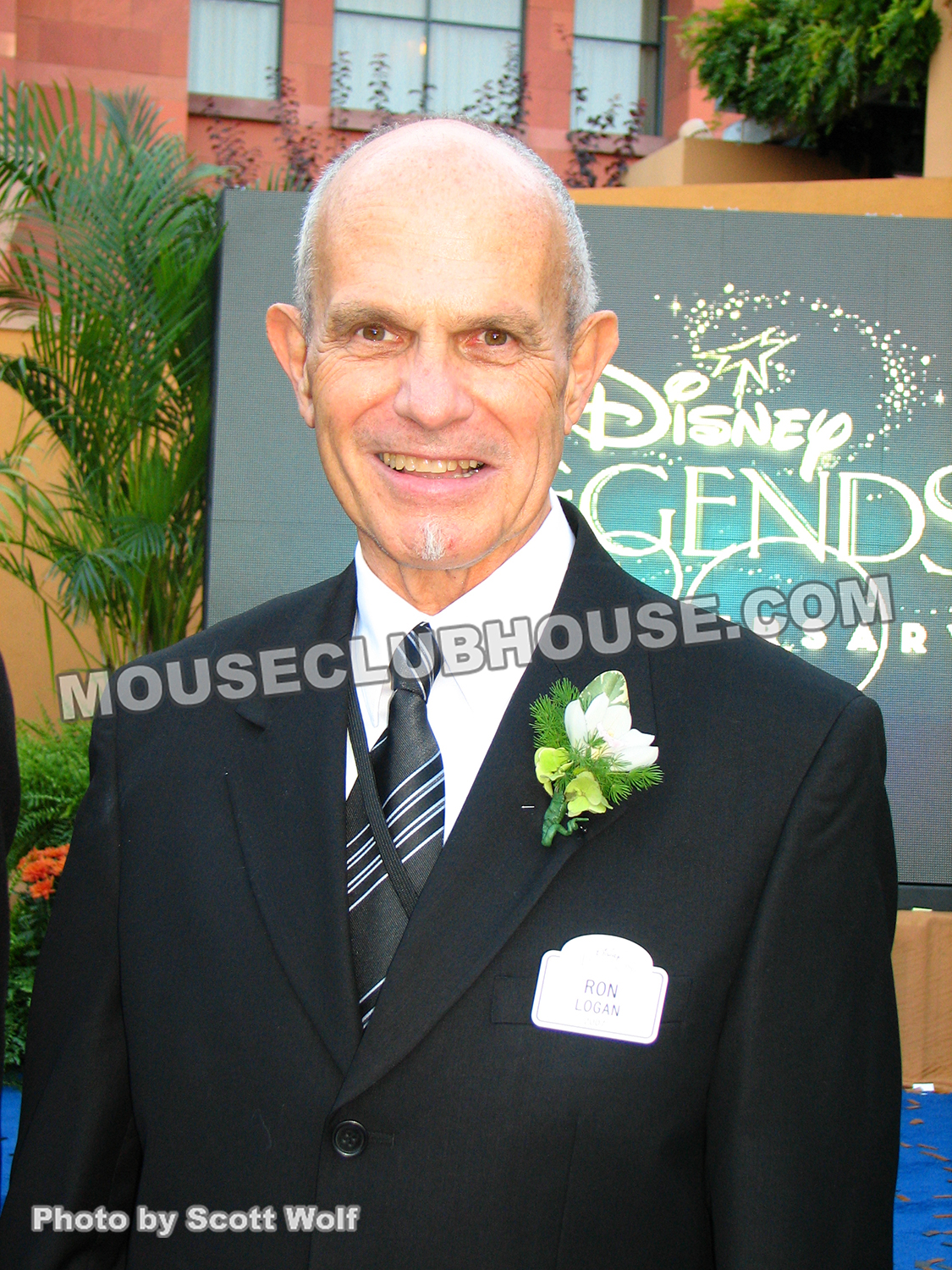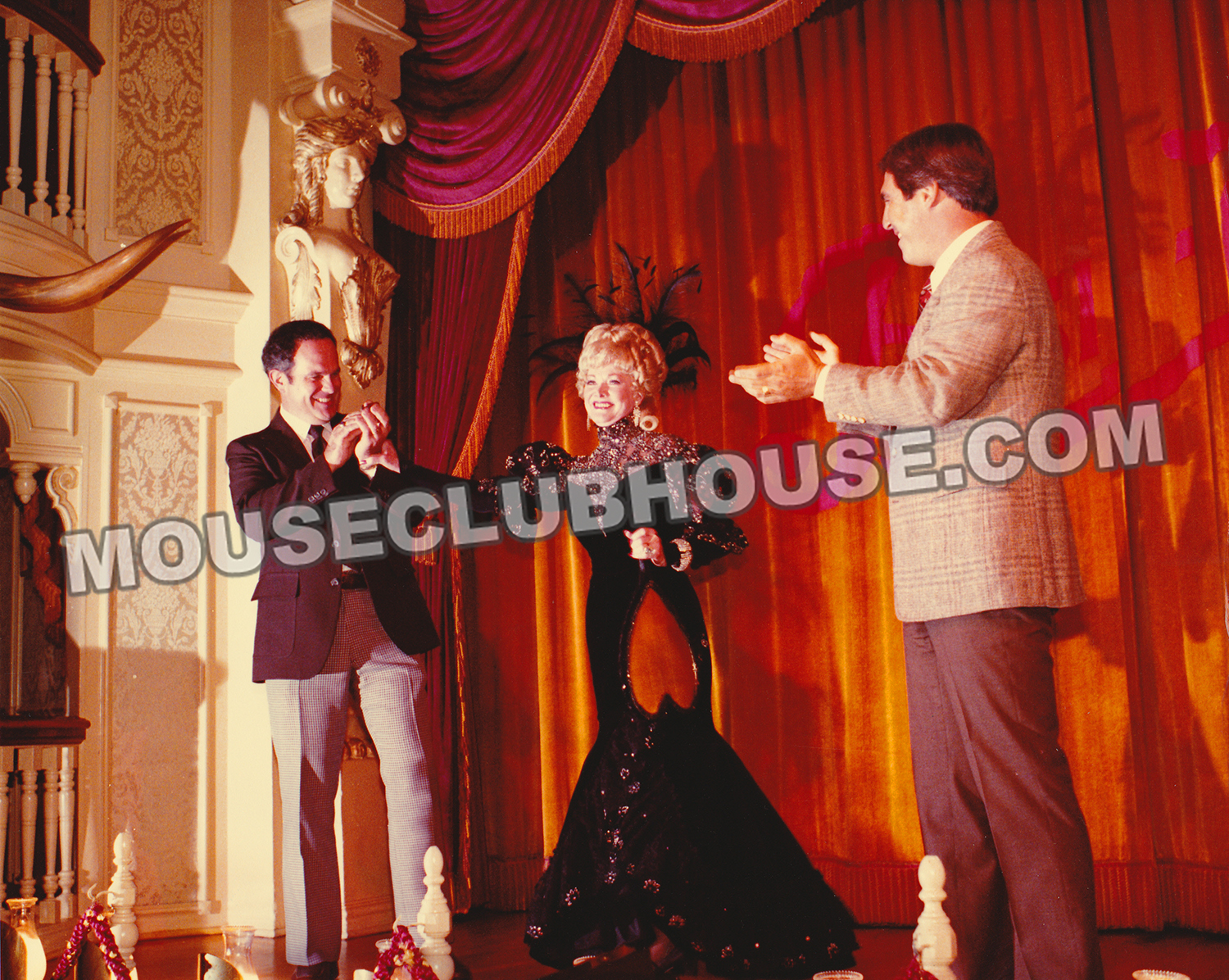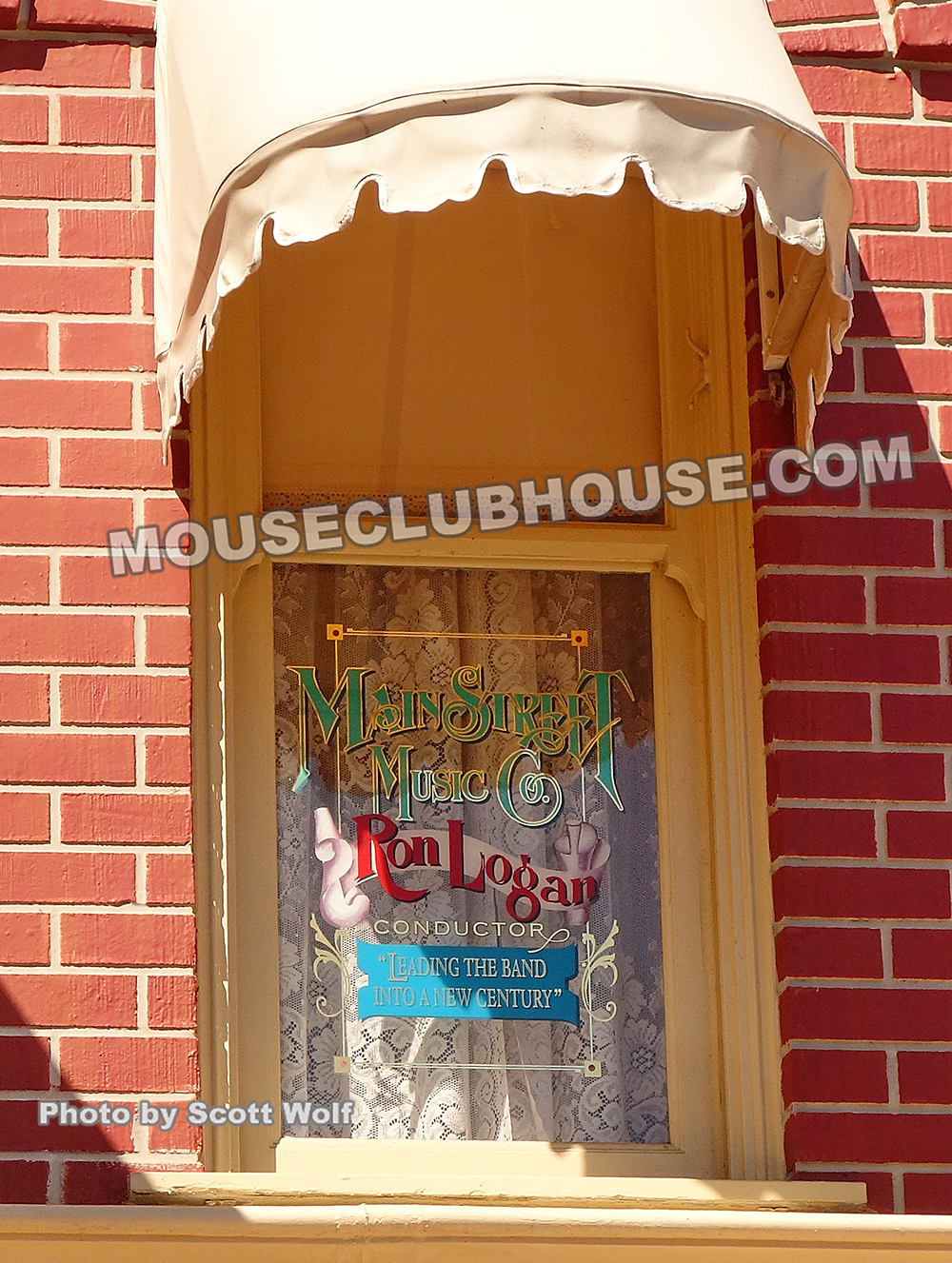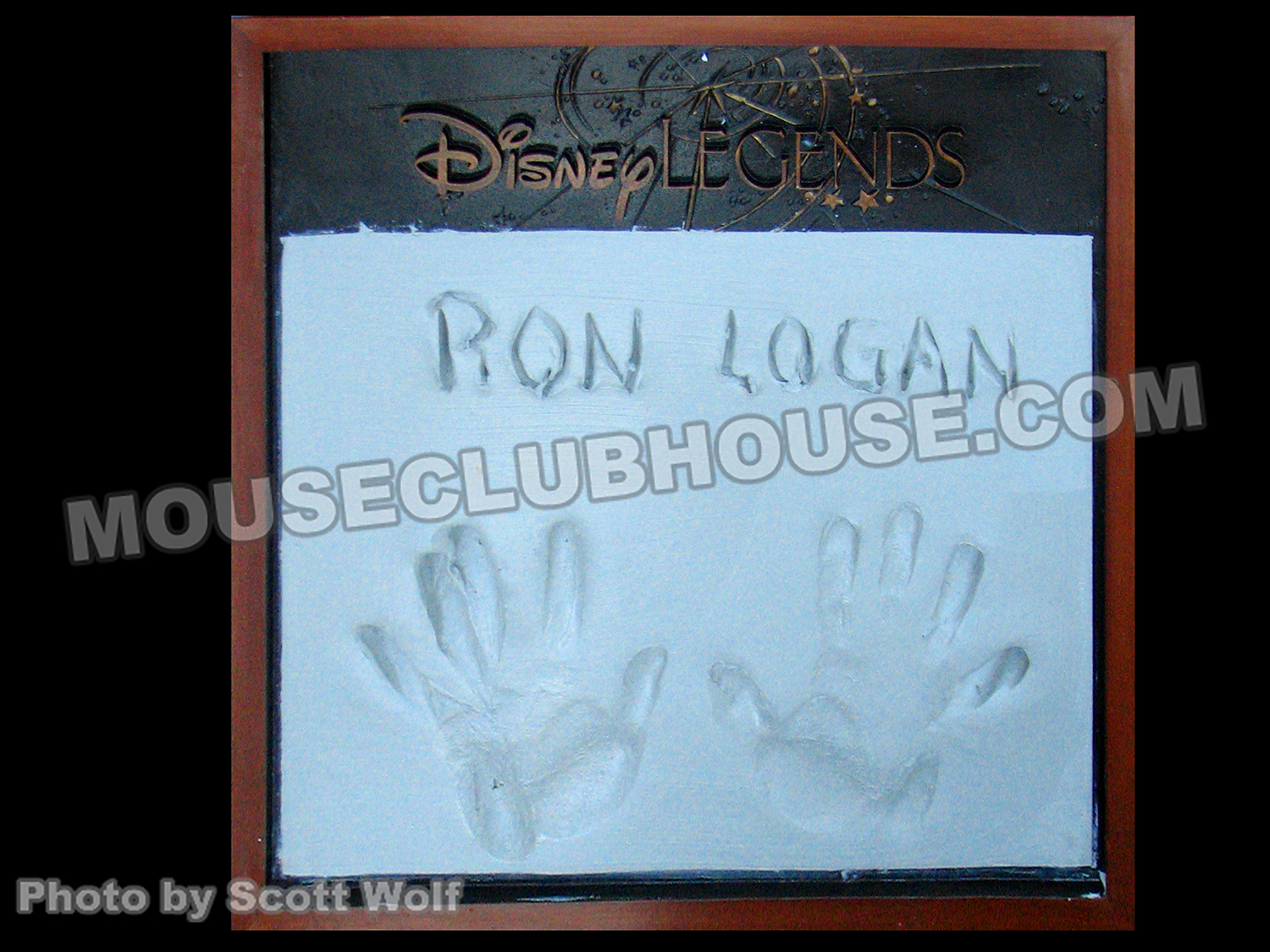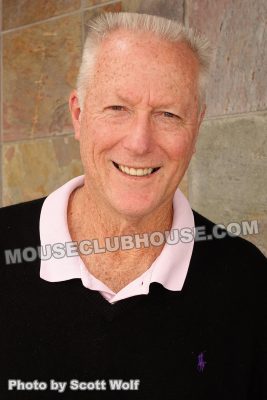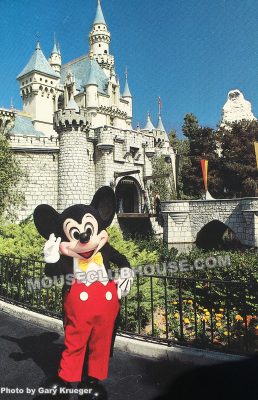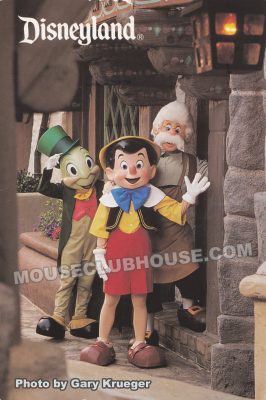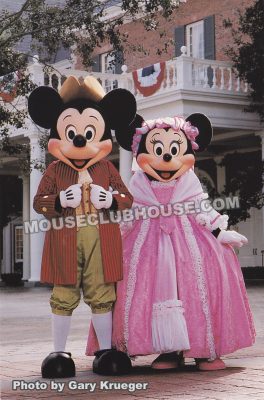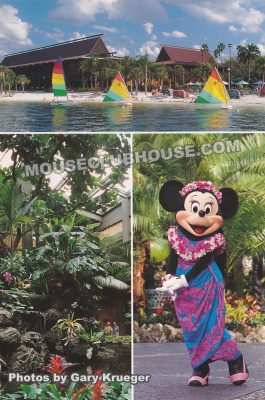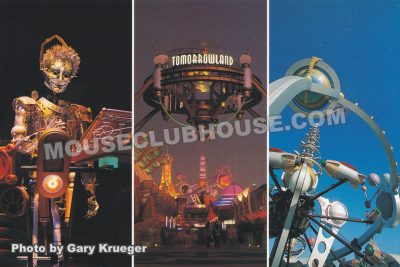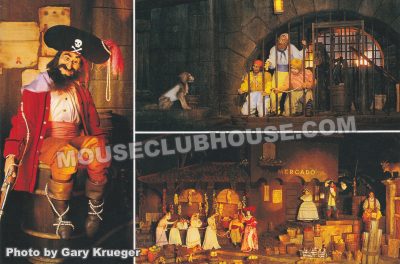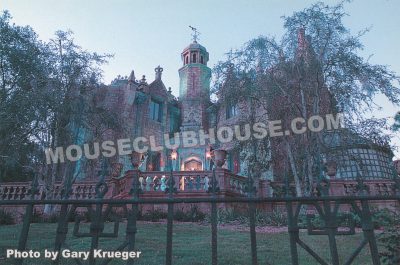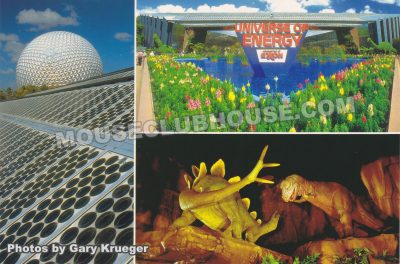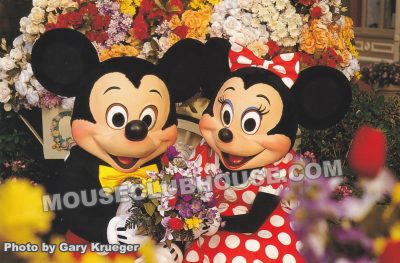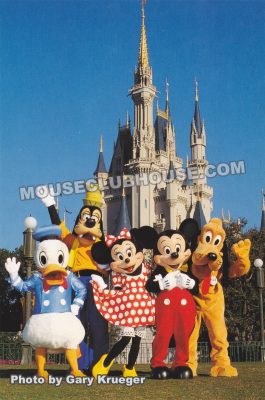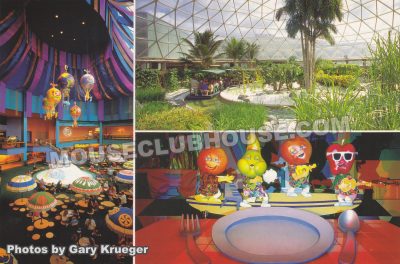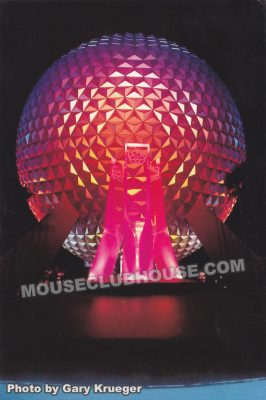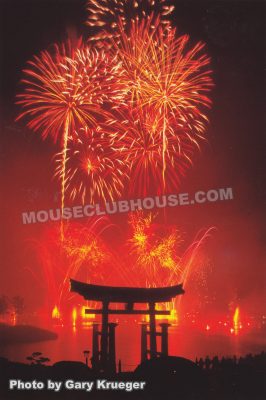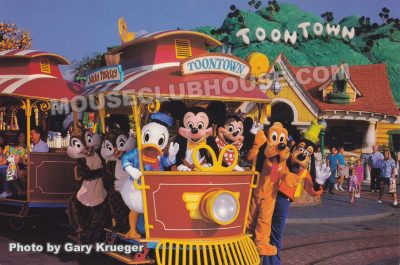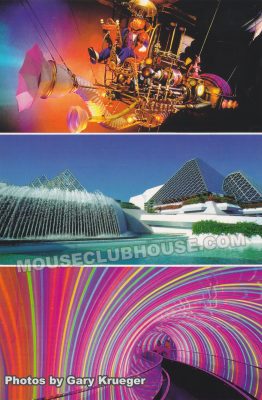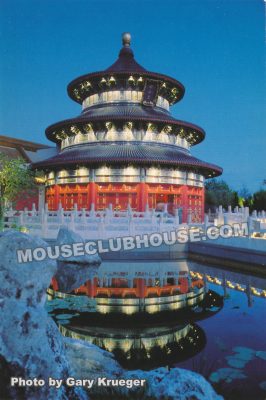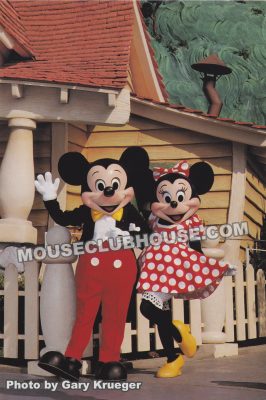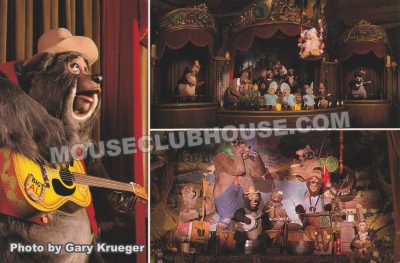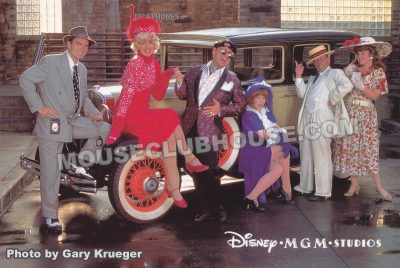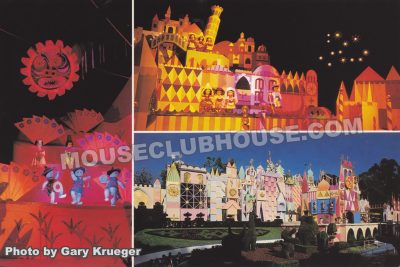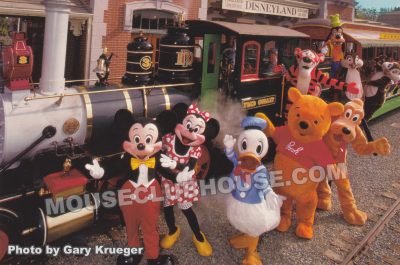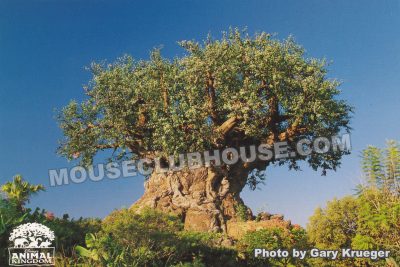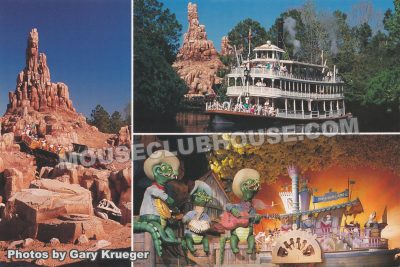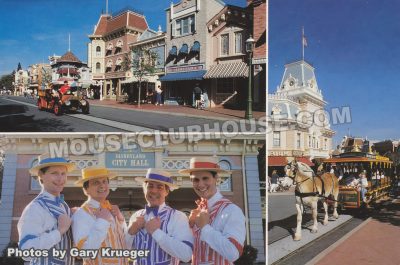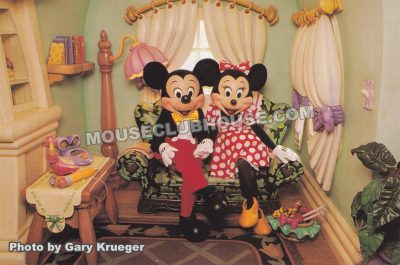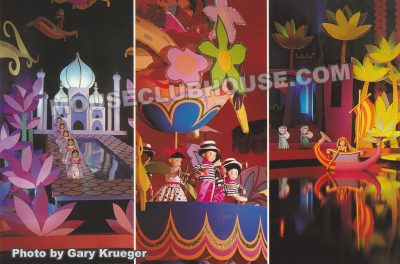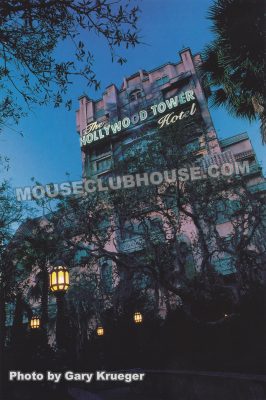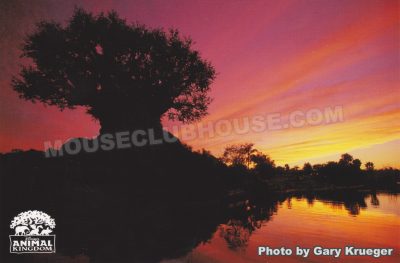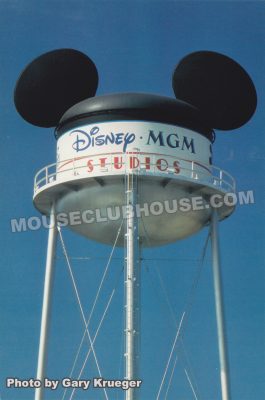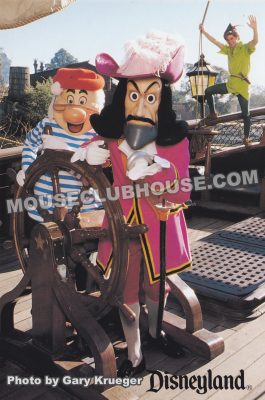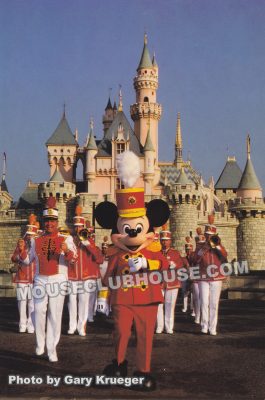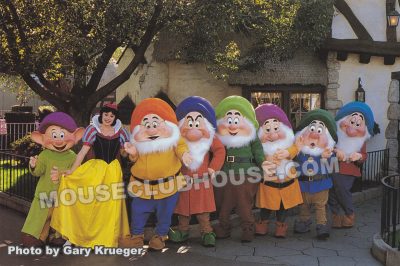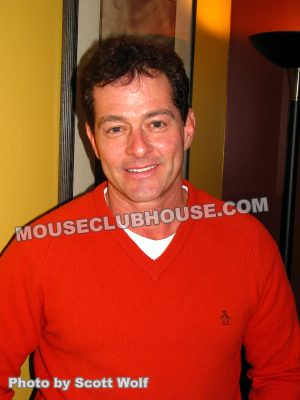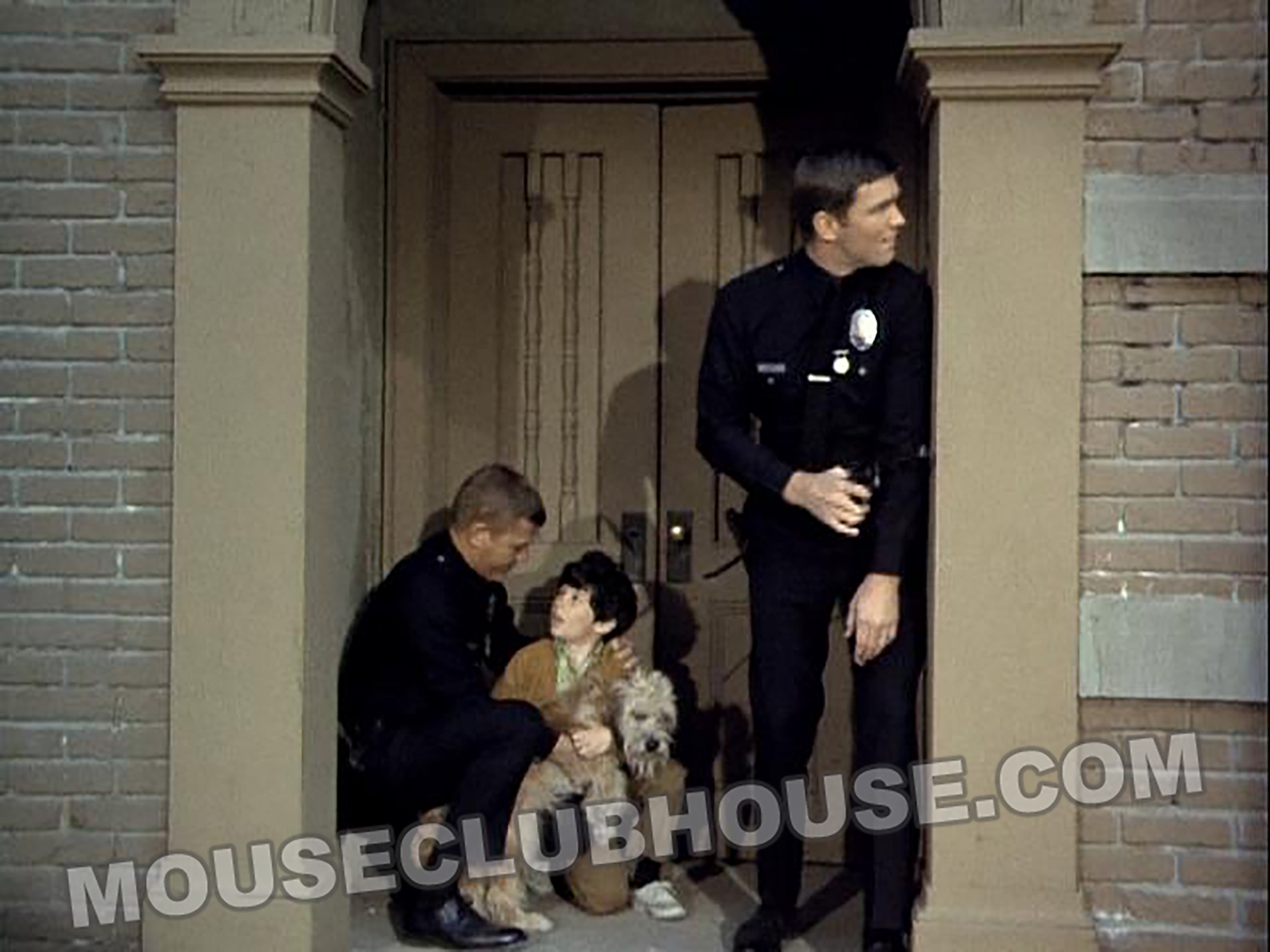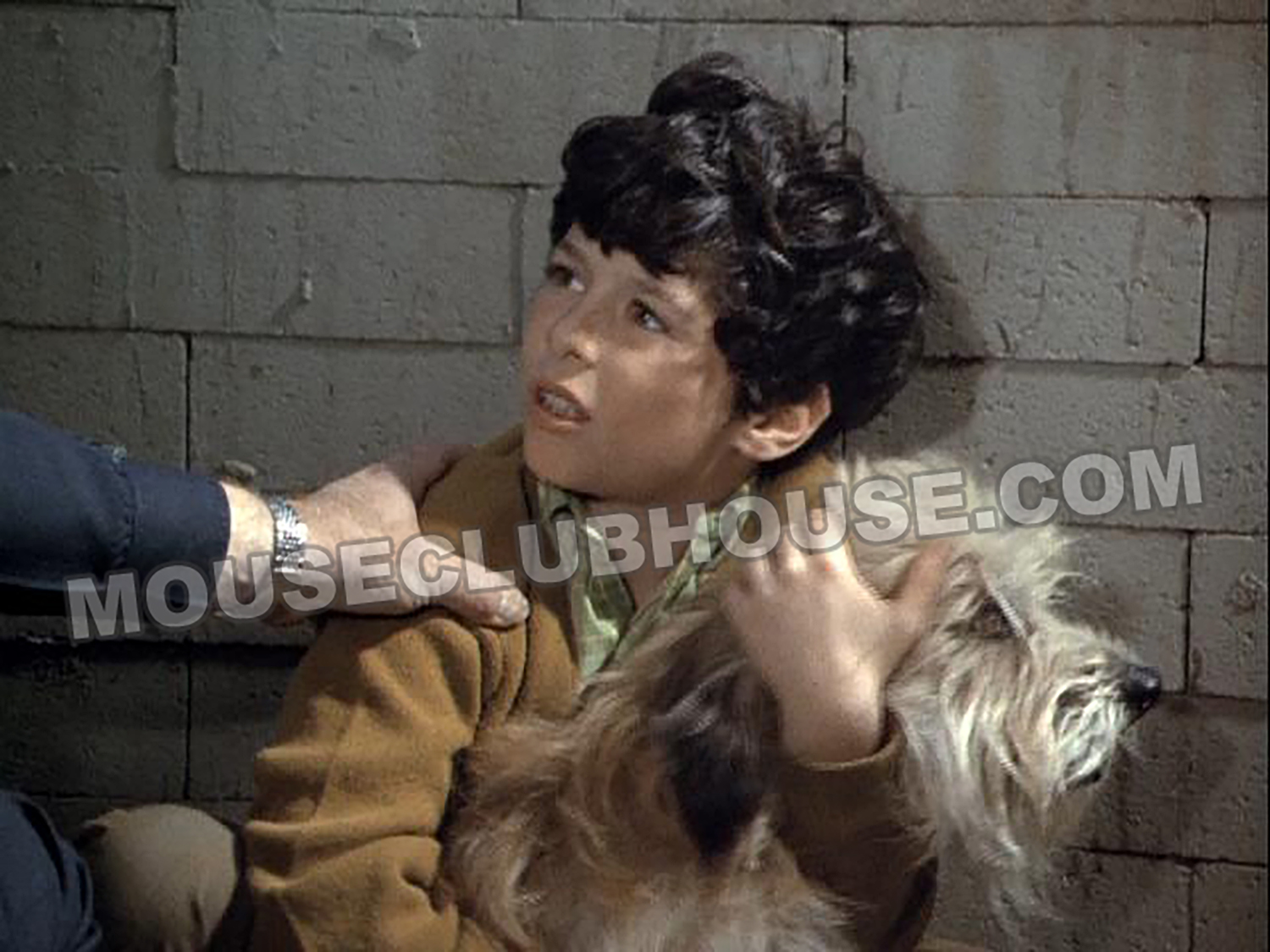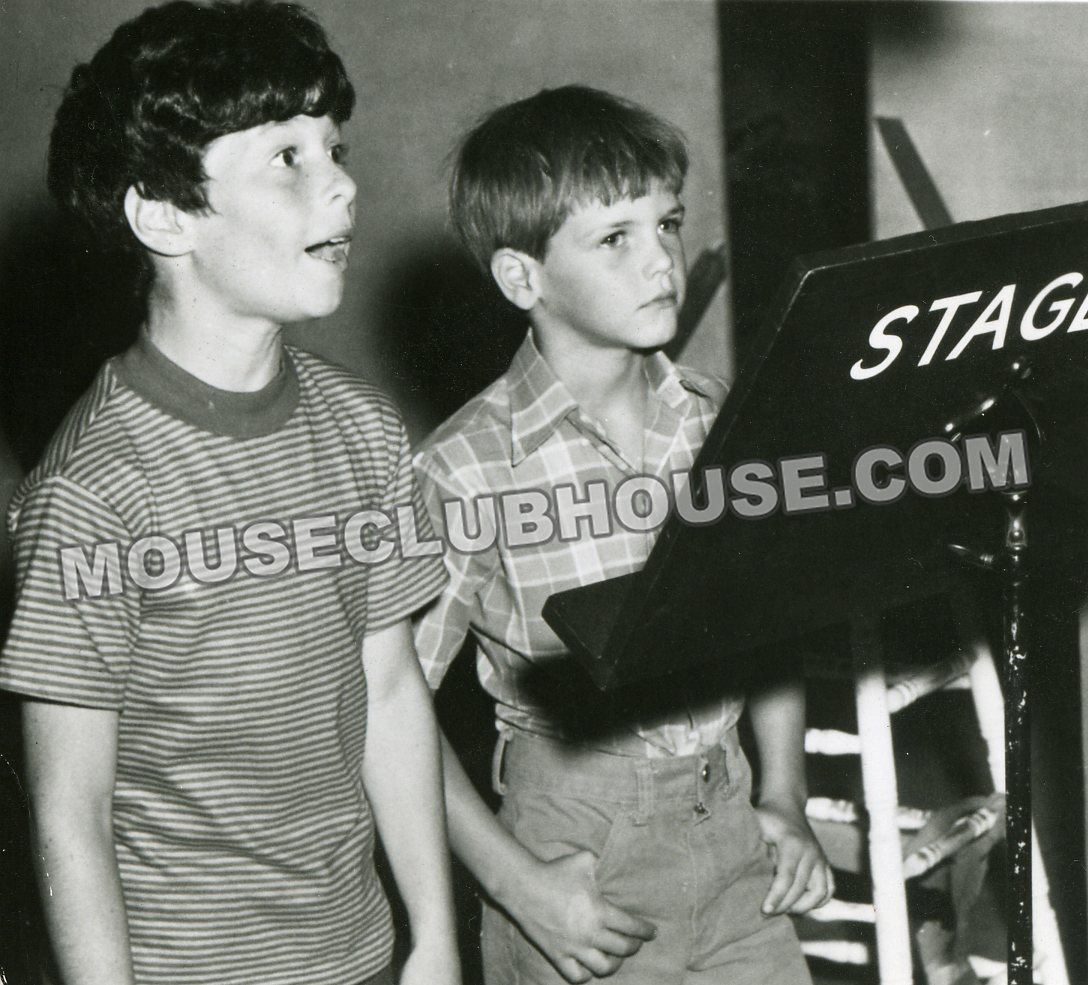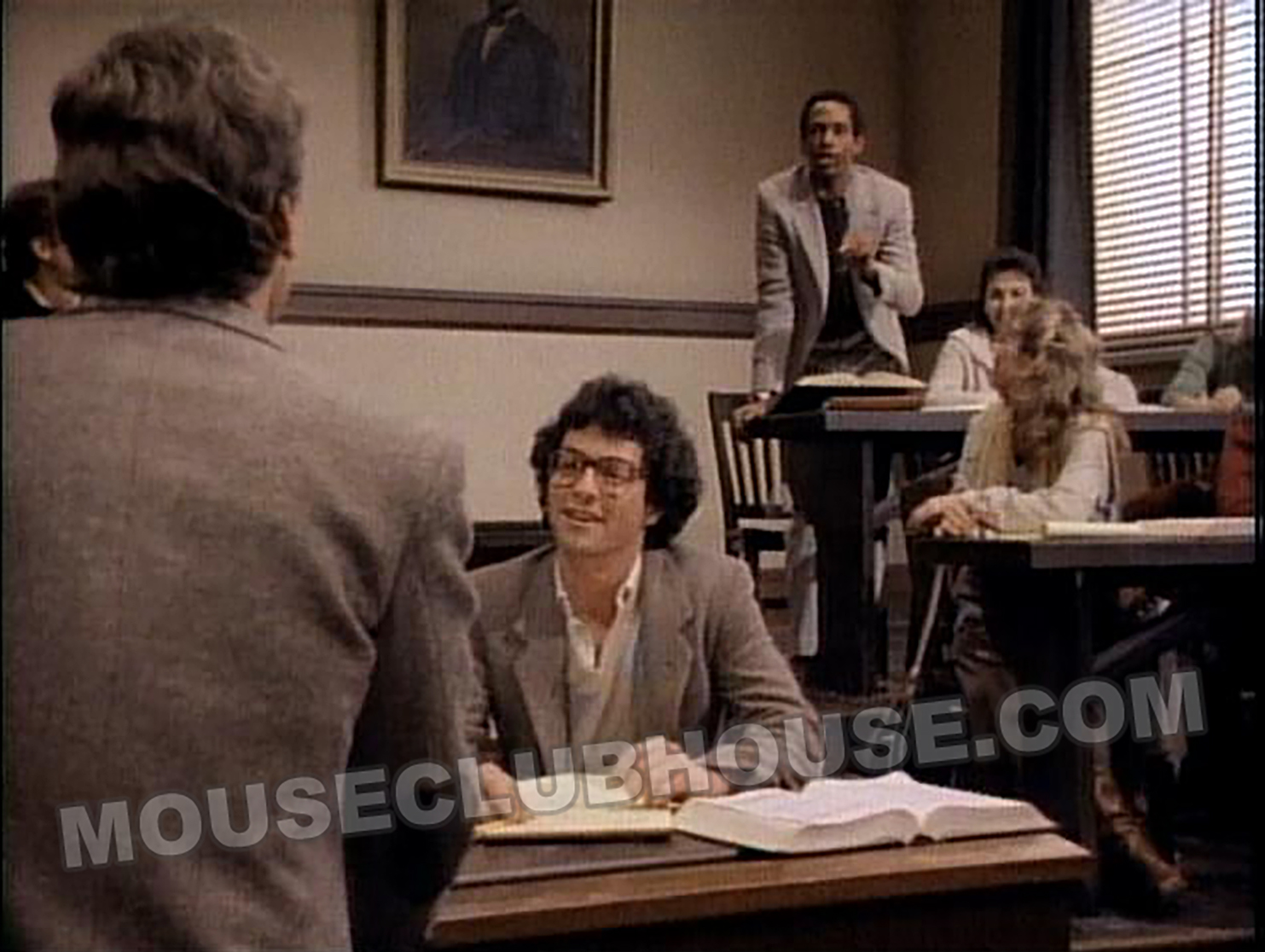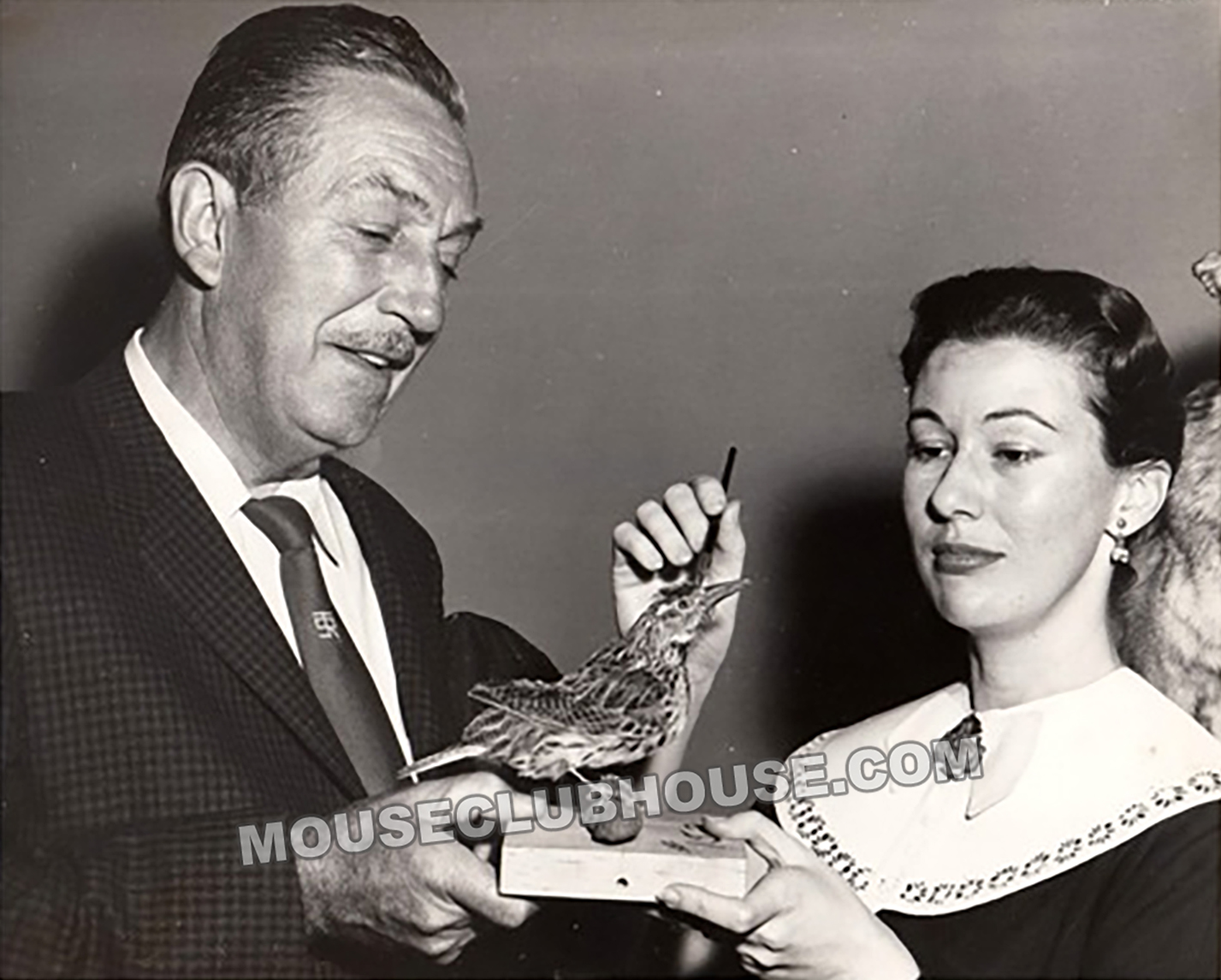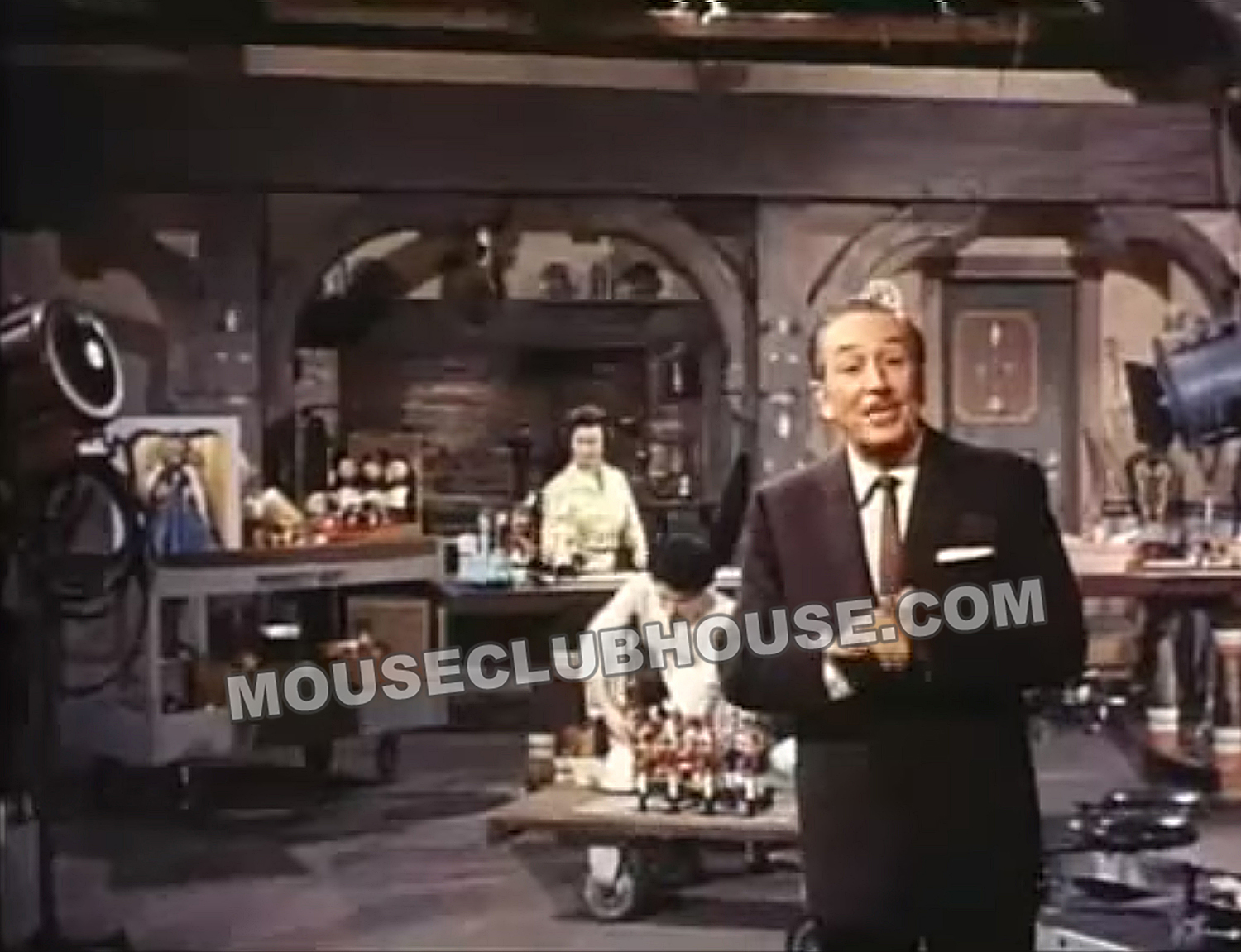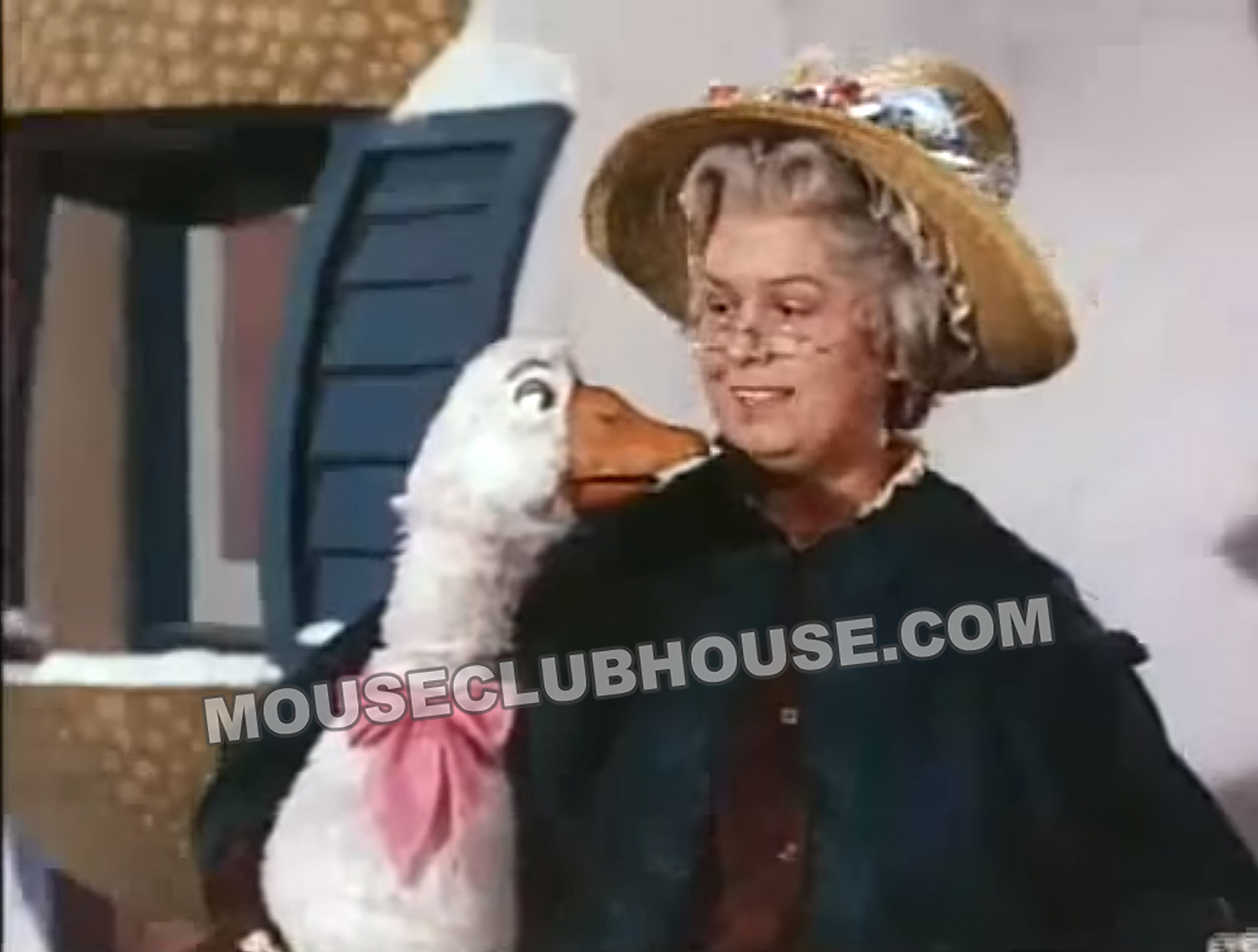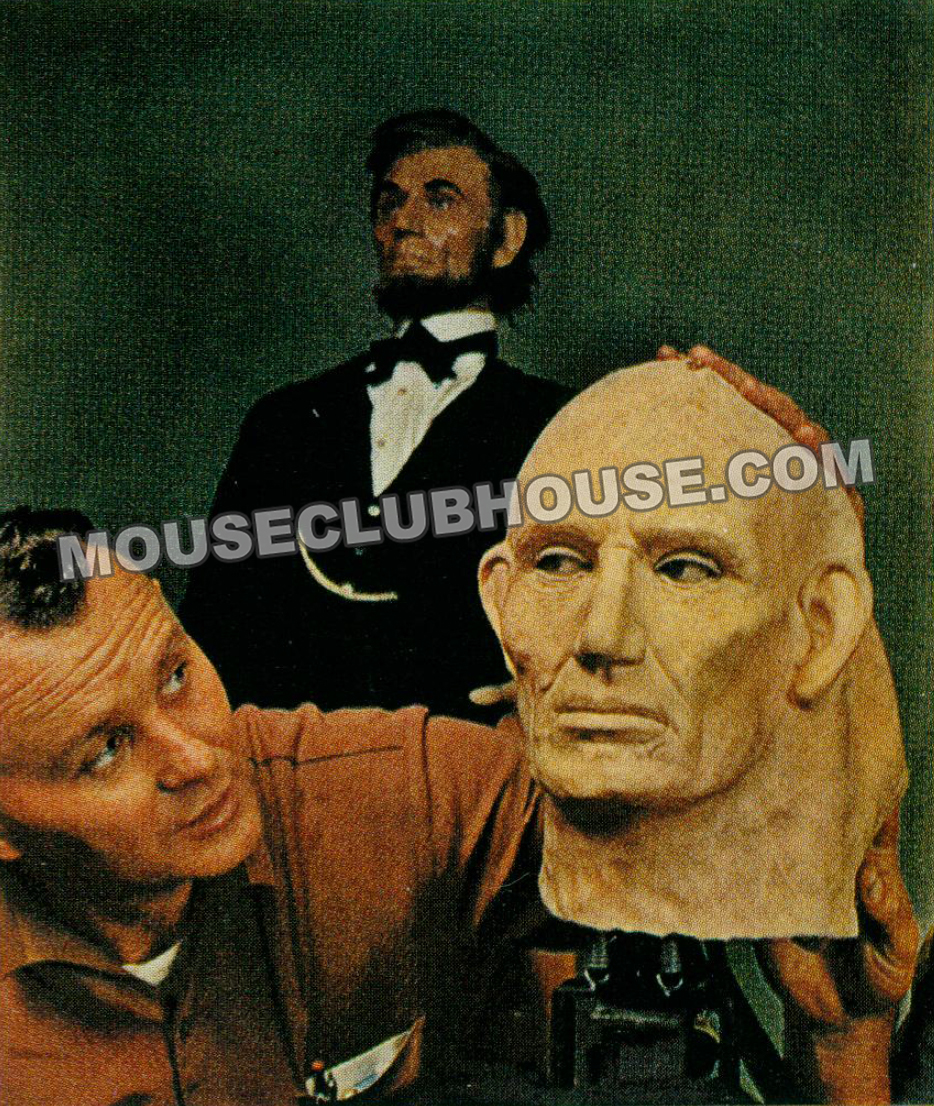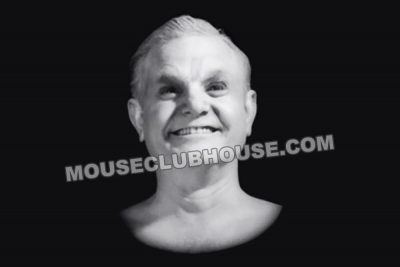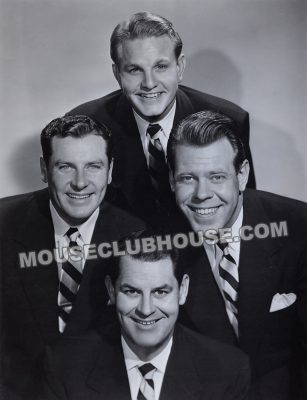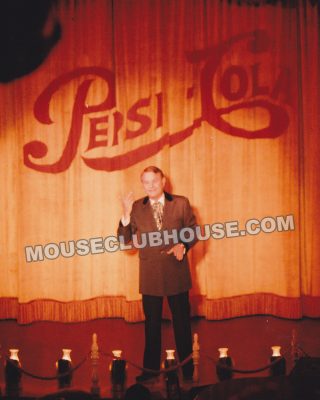Below is the transcribed interview of the Don Dorsey interview regarding IllumiNations: Reflections of Earth at Epcot. To hear the interview and view related content, please visit www.mouseclubhouse.com/interview-don-dorsey
SCOTT WOLF: This is Scott Wolf and this Mouse Clubhouse conversation is with Don Dorsey. Don is a musician, director, producer, and audio engineer whose work for Disney includes everything from musical performances and arrangements to sound design and complete show design and direction for several Disney parks.
I personally first became familiar with Don when I saw him on the Disney Channel in a show about the Main Street Electrical Parade. Don was demonstrating how he performed much of the music in the actual parade soundtrack. It wasn’t until a few years later that I made the connection that it was the same Don Dorsey who arranged and performed a synthesized classical CD I already had in my collection called Bachbusters. His CD was number one on the Billboard classical charts for 14 weeks in 1986 and his second CD, Beethoven or Bust was number one for 24 weeks in 1988.
In this conversation from 2009, Don talks about his start with Disney and working with people like Jack Wagner and Bob Jani, and his involvement in the bicentennial America on Parade.
Because I didn’t originally intend for this conversation to be heard by the public, and I was already familiar with those names, I didn’t ask Don to elaborate for people who may not know. Now that you’ll be hearing this audio, I want to give you a little more detail, so I’m sitting here with Don right now.
First and foremost, who was Jack Wagner?
DON DORSEY: Jack Wagner’s probably best known as the voice of Disneyland. For many years, Jack was heard doing all of the in-park announcements, ladies and gentlemen, boys and girls, please keep your hands and arms inside the various ride and attraction vehicles. Also, the voice of the Disneyland train announcements. For a long time, the voice of the ticket booths. And Jack was the audio producer for everything the entertainment division created. He was also my mentor. He persuaded Bob Jani to hire me as his personal assistant, and I worked directly with Jack at his home studio for many years.
SW: Right, and you also mentioned Bob Jani in the conversation we’re going to hear.
DD: Bob Jani was the vice president of entertainment at Disneyland and Walt Disney World, up to 1978. He created the Electrical Water Pageant, America on Parade, the Main Street Electrical Parade and later went on to form his own production company and become president of Radio City Music Hall Productions.
SW: I know you mention America on Parade in the conversation, can you set the stage about that parade for people who may not be familiar with it?
DD: America on Parade was one of the largest parades Disney ever produced up until Fantillusion for Tokyo Disneyland. It replaced all parades at Disneyland for 1975 and 1976 while we were celebrating the bicentennial, America’s bicentennial.
There was a special overture tune for America on Parade, written by the Sherman Brothers, called “The Glorious Fourth,” and that played as an overture before the parade arrived. The rest of the America on Parade music was me and Sadie Mae. Sadie Mae was a mechanical musical instrument that we call a band organ. It has flutes and pipes and drums and whistles and plays itself from basically large player piano rolls.
SW: Yeah, that’s very cool. And one last thing, before we get to the conversation. You briefly mention Jack’s announcement for the Electrical Parade. Is that the one that had the electronic voice?
DD: Yes, that’s the one. In thousands of sparkling lights and electrosynthemagnetic musical sounds.
SW: Well, thanks, Don! Now, here’s my conversation with Don Dorsey from 2009.
DD: When I got out of high school, I bought the Minimoog with money from my mother and just started learning it inside out and doing recordings at home, and I had a four track recorder and I would do multiple parts and mix them together and then overdub that and so on. So I was teaching myself multitrack recording and learning about recording.
Because I had a synthesizer all my friends from high school who had bands were very interested in that. So if they were going to go in the studio and make a demo tape, then I would come in and bring my synthesizer and add the synthesizer tracks to their demo tape, and sort of produce the session, work with them in the studio because I had more recording experience.
I worked out of this one studio in Santa Ana called United Audio. The engineer there was Bob Stone. Bob Stone was sort of a mentor in that as he was engineering I would ask a lot of questions and he would teach me. So as I did more and more recording sessions there and got to know the engineering a little better, and got to know Bob a little better and he saw that I was interested and capable, we got to be friends. At some point, and I don’t remember what the session or occasion was, but at some point he got called out of the room on a phone call and he was gone for a long, long time, and the musicians who were paying by the hour were getting antsy, and I just said, “Well, I know how to press record,” so I moved over into Bob’s chair, and I pressed record and I’m flying the session. Then, when Bob came back I said, “Here you go,” and he said, “No, no, you’re okay.” Then he sat and coached me from the producer’s chair and I was engineering.
So I had this engineering background and as I worked with more and more friend groups and so on, I would buy – the studio time I think was 75 dollars an hour or something. The studio wasn’t doing very well. As I was needing more and more studio time, and people were tied up for money, I would go to him and I would say, “If I pay you cash for 10 hours, can I get a discount?” And so we had this ongoing thing, I would buy in bulk the studio time, which would keep his studio busy and he would have cash. So I got some great deals on studio time, so I was able to find projects that I wanted to record and since I could now engineer, I didn’t have to have the engineer there, he didn’t have to pay the engineer, so it worked for him, it worked for me. So I brought people in and we produced demo tapes and stuff and I got more engineering jobs and so on.
Meanwhile, I was going to Cal State Fullerton, in the music department, I was a music major at the time and I was doing music copying and transcribing and stuff. Jose Feliciano opened a studio in Orange, on Tustin Avenue, and somebody said, “Oh, he’s got the studio, we should really go check it out. So we went down there, we opened the door and walked in, and it’s a big, empty, professional studio and finally we found the control room door and walked in.
There was a guy in there, his name was Bobby Thomas, and he was the engineer. And we started talking to him and he found out I had the synthesizer and he said, “Oh, why don’t you bring it to the studio,” so I brought it to the studio and we ended up staying up all night and recording a track of a piece that I had written. He played drums. What happened was he said, “Let’s record something,” and he set up the machine and everything and he went out and set up the drums and I stayed in the control room and played bass on the synthesizer to his drums and we just sort of laid down a rhythm thing and then he came back and we did overdubs and overdubs and overdubs, and that was how we got to be friends.
Somehow a connection was made, I’m very fuzzy on how this happened, between me and the Moog company. They had a local sales rep in L.A. and Orange County areas I guess, or southern California area or something. And maybe I contacted them with the idea of doing demos and making some money. That’s probably what happened is I sought them out and I said, “I’ve got a machine, can I work for you guys?” give demonstrations or whatever and they said yes, we’ll set you up with some schools and you can go give demonstrations.
I know I did a couple of those, but through knowing that representative of Moog, Jack Wagner also knew him and after Paul Beaver passed away, Jack asked this guy, “Do you know anybody else who knows how to program a Moog synthesizer, or has one?” He said, “Yeah, there’s this guy in Fullerton, his name is Don.” I got a call from Jack and he said, “I hear you’ve got a Moog synthesizer and we want to rent it for a project we’re doing at Disneyland.” And all they needed it for was to do a click track, but they wanted to rent it from me to do that and then in exchange, Jack gave me some recording tape. We had a swap kind of a deal. But we got to talking and he got to hear some of the stuff that I had been doing, but that was kind of like a one shot deal.
Then in 1973 – I think it was ’73, it might be ’74, I had my Minimoog and I had been writing half time shows for my high school marching band while I was in college. I’m doing all these odd jobs to earn money, I’m doing lead sheets for Jose Feliciano, I’m writing children’s musicals for Nancy Ebsen (Buddy Ebsen’s wife), I’m producing bands in the studio and repackaging studio time, I’m learning engineering. I’m all over the map.
SW: You were a teenager?
DD: Yeah, 18, 19, 20.
We did two seasons of halftime shows for my high school marching band. What I did was I took popular commercial tunes, you know, from TV commercials, and orchestrated them for the band and then they did a halftime show of commercial tunes. Those were the first orchestrations that I ever did, that was kind of my learning ground for that. I studied it in college but we didn’t have practical ways to do it other than exercises for the class, so I was doing it on the outside to learn about that.
So we had two great seasons of that, the third season, I came back and I said, “I want to do a halftime show with a synthesizer in it,” and the music director kind of looked funny and said, “How do we do that?” Wires, and amplifiers, and cables on the field, and you can’t march. I said, “I don’t know, we’ll figure that out.” He said, “I don’t know, maybe, maybe not. Maybe that’s not for us.” But I had the bug and so I went to Fullerton College, which was at that time called Fullerton Junior College, they had a marching band, and I had known their band director because he was the assistant conductor for the Orange County Youth Philharmonic that I played tympani in. I said, “I’ve got this idea, why don’t we do this synthesizer thing,” and he said, “You know what, the whole field thing is complicated, but if you would like to do one of our regular concerts, as like a guest soloist, that’s a cool idea and we would do that.”
So they commissioned me to write an arrangement for the concert band and synthesizer solo, which I did, and I chose a piece by Emerson, Lake & Palmer called “Abaddon’s Bolero,” which was basically, it was a lead line melody over increasing rhythm. It’s like a bolero. But it was something that because Moog’s at that time, you could play one note at a time, it was doable with the gear. So I called up this Moog rep and I borrowed a second synthesizer which was a bigger one with patch cables and everything, and we did the concert. While I was playing one instrument, I was setting up the program on the other one for the next verse and then I would play this one while I was reprogramming this one so that we could keep going. So I actually had two synthesizers going.
I don’t know if Jack read in the newspaper about that on his own or if I called him or sent him a clipping or something, but he came to that concert, and it was after that concert when he said, “I think we may have a job for you.” Then I didn’t hear from him again for a long time. It was late ’74 when he called and said, “We’ve got this America on Parade thing coming up, would you be interested in doing the synthesizer work on that?” And that eventually came to be and I got five dollars and hour, went to Jack’s house, set up the synthesizers in his dining room. The 16 track recorder was brought in and we did all of the stuff there. In addition, to overlaying the synthesizer on the band organ, I had to do other things.
For the track “Dearie” there had to be tap dancing, so I said, “I know what tap dancing sounds like,” we got some tap shoes and I just faked it with my hands, and later when that track hit the street, we had people comment, “Who’s the dancing? It sounds pretty cool.” I thought, “Oh, we fooled them!” But I played banjo, the sailing ship was the piano bench from my mom’s house that creaked and we brought it in and I squeezed it until it creaked just right, and we slowed it down so it made this old creaky wood ship sound. We were doing lots of inventing musical sonic storytelling in Jack’s dining room, and having a blast.
SW: It was a band organ initially…
DD: Yes, the idea was always to combine the authentic traditional band organ sound with new electronic sound and create what Bob Jani called “The Great American Music Box.” When Bob said, “That’s what I want,” that’s when Jack said, “Oh, I know the guy,” and they got me to do that.
SW: Had the band organ already been recorded?
DD: When he first contacted me, I don’t know if it had or not, but there was a while… I started in January of ’75, and I believe that they recorded the band organ in October or November in Nashville. The “books,” the punched music for those arrangements, Jim Christensen did the arrangements, basically a sketch arrangement, sent it over to Belgium, where the guy who creates the arrangement for that machine and punches the books lives. Then they send back the books. The books meet up with the machine in Nashville. They played them and recorded them.
SW: When you say “punches,” it’s like a music box?
DD: It’s like a piano roll except it’s on cardboard so it flip flops. It folds back and forth to create a stack, which is why they call it a book. It’s a big, heavy book. It’s about 15 inches tall and about five or six inches wide, and then depending on the length of the arrangement it could be anywhere from an inch to a couple inches thick. And it just feeds into the machine and comes out the other end and stacks itself back up.
SW: The band organ had the drums, and…
DD: It had the drums, and the bells and the horns and the snare and all those things. They sent the guy in Belgium a description of “here are the things on this machine and the ranges that it has, here’s the tune we want, here’s our idea for the structure of the arrangement, the baseline and the chords and all that.” And then he did what he does, which is orchestrate for band organ, create the thing, and send it back.
Nowadays, the music director would go and work with him in great detail. In those days, it was like, well, there’s one guy who does this so I guess we’ll just send him what we want and we’ll get what we get. It was really quite primitive. And one of the arrangements that we got back, I don’t remember off the top of my head which song it was, but there was one song where he had done like four choruses in a row and there was no verse. And so Jim Christensen was like, “We have to create a verse somehow,” so I said, “I can synthesize the band organ, I can fake enough of the band organ sound, so let’s just splice in some blank tape between the choruses and then I’ll record over the whole thing and then we’ll have that piece. So that’s what we did, and this was two inch tape, so these are big splices that we’re making. But, what I did was we got the tempo and then I recorded blank tape with clicks on it so we could count the beats, and then counted off as many beats as we needed, and cut it there and spliced it in, made up fake band organ sounds and duplicated it as best as we could.
The story’s kind of jumping around a little bit with the Moog guy and all that. Fullerton College actually had me come back a second year and reprise the performance and it may have been the second performance that Jack saw, I don’t recall, because I didn’t keep a journal in those days. I didn’t start keeping a journal until ’85, and it has been so good to have since then. I wish I had it for my early days.
So that’s how Jack and I got hooked up, but during the process of America on Parade, going back to the engineering part of this, at some point we had all this stuff recorded and Jack said, “Bob wants to hear it, we want to play it on the street on a mock-up of the sound system to hear what it sounds like. We need to go the studio and mix this,” and I said, “Oh! I’ve got a studio that I work at, I can get you cheap studio time, and I can engineer it,” and he goes, “Oh! Okay!” So we trundled down to United Audio and we did the mixes and we went back to Main Street and played them on Main Street for Bob and Bob said, “These are great! These are fine!” So Jack said, “Well, I guess you’re the engineer!”
We kept some of those first mixes, and then as we produced more stuff, then I was just the mix guy, and that whole parade was wrapped up and I helped them master the phonograph record. We went to record “The Glorious Fourth,” and I didn’t engineer that, but I was there, observing.
SW: And that was not the band organ, that was the song that was played before…
DD: That was part of the intro. Yes. And I got to play the “whoopee” whistle. It was at Warner Bros. that we recorded the orchestra, in the big scoring stage, and recorded the whole band and I got to play the “whoopee” whistle. I don’t know if it didn’t come out during the original recording or what, but I got to overdub it. They brought in vocalists and we mixed that then I went back to Jack’s and helped him with the production of it because there was narration and there was band organ music under it and there was “The Glorious Fourth” song. It was like seven and a half minutes or 7:35, something like that, and it was supposed to play to end at each zone as the parade arrived. So there was this timing issue which nobody had really thought much about yet, when the parade was going to launch.
So we finished all of the material for America on Parade, and my job was done. You know, great, thank you, we’ve got our soundtrack, we’ve got everything produced. And I thought, this is the biggest thing I’ve ever done, I want to see it open. And the opening was going to be in Florida, Walt Disney World. So I asked Jack, I said, you know, “Could I go?” and he said, “Well, as long as you pay your own way. If you want you can stay with me, and you can like be my assistant and drive me around, in fact you can go two days early and hand carry the master tapes because I’ve got things to do and that will save me two days.” So I bought myself a plane ticket to Florida and carried the master tapes down there. Showed up and Tom Durrell who was the chief audio engineer took me to Studio D and showed me that, and got the master tapes from me and all that.
During the week or two weeks of rehearsal and staging I was driving Jack around and following Bob Jani and watching how parades were produced and what happened at a rehearsal and coordinating all this stuff, and just soaking it all up.
After that whole experience and the parade opened, I flew home, but Jack and Bob flew back together and Jack told Bob he wanted to hire me full time as his assistant, and Bob said okay. So they gave me a contract and it was my job to report to Jack’s house every day at ten in the morning and work with Jack until he said we were done, which was usually about four, with an hour off for lunch, an hour and a half off for lunch, to work with him producing tapes, and seguing music and editing stuff and running errands to Bob’s office and back.
SW: What types of things were you working?
DD: Editing character voice tracks, editing announcements, he did a lot of character voices for the studio back then, we did the fireworks show music tracks…
One of the other things we did in Florida on that first trip actually was, and this is also before Jack got there, I’d forgotten about this, but one of the things he was supposed to do in Florida was to art direct a photography session for the Steel Drum Band for an album cover, because Jack was trying to produce albums that the park could sell. And I got there and we set up the drums and everything and I’m kind of like art directing the photography of the cover until Jack got there.
There’s also a great memory in a production meeting at Bob’s townhouse after rehearsal, and this is like two in the morning, or three in the morning or something. Bob was always so clean and proper and he had a white suit for Florida and white shoes and he was just always impeccably dressed. Mister polite, Mister organized, and there was the production team of ten or twelve people we were sitting around in his townhouse having a meeting and he got up at one point and said, “I baked a cherry pie!” And he goes to the kitchen which is right there and he tries to pull the pie out of the oven and actually flips and goes face down on the floor and it splatters all over his white suit and we’re all just like, “Oh no! This can’t have happened to Bob! How horrible!” And we’re kind of waiting to see what he does and he just kind of looks at it and goes, “I’ll deal with that tomorrow.” Came back and sat down and pretended like it never happened.
I was doing everything that Jack was doing, and he was teaching me editing and when do you leave a breath in, when do you take it out, pacing, how do you deal with presentations for executives, basically just being his right hand guy. And then when there was a recording session, I got to engineer it.
SW: He put a lot of trust in you, he just got of found you in a college.
DD: Well, he found me, but the whole America on Parade process took six months, you know, and we were working together every day for six months. He saw my musical aptitude, he saw my technical aptitude, he saw that I was willing to learn and to learn from him, you know. I brought knowledge to his realm that he didn’t have, the whole technical thing, you know, how do you align a tape machine, I don’t know that he had ever aligned his tape machines with a test tape, so I was able to say let’s get a test tape, let’s make sure your machines are clean, demagnitized, everything sounds good. I brought him another level of expertise to his production facility and he brought his experience and knowledge to mine. So in that respect it was a great time of learning and being able to contribute and help.
Because I was his guy, I was in big meetings with top people, seeing it all, learning it all, because when we left the meeting we had to go do what it was that was there, and if Jack had other stuff he had to be doing I could be editing music while he was recording announcements. If errands had to be run, I could be running errands while he was doing stuff, so he was more productive because I was available.
We did slide shows for the studio for marketing, it was not all glorious parade big stuff, it was a lot of daily things. Sometimes we were actually physically making announcement cartridges, cutting the tape loop and stuffing it in the plastic box and sending it off to the park, all out of his house.
SW: So you’re next big thing would be Electrical Parade?
DD: Actually, it was the Electrical Water Pageant.
SW: Yeah, how did that come to be?
DD: There was a company called E-mu, that brought a big synthesizer down to Disneyland to give a demonstration, and I think Sonny Anderson brought them in. We got a bunch of the music department and entertainment people together and they gave a demo of this big synthesizer. Of course, I was fascinated and everybody else was, “Oh, that’s cool.” Synthesizers were still relatively new and strange and here was this big box with a lot of patch holes on it.
I got to talking to the guys who built it. There was a tour going out on the road and I don’t know exactly how this idea came up, but the idea came up that maybe instead of sending a band with the tour, we can prerecord the music on the tour. And then from there it got to the point, well, “Could you do it all on this synthesizer?”
SW: A tour for like maybe promoting an upcoming film?
DD: Promoting an event or something. I think it was Space Mountain opening. Maybe that’s why the idea of the synthesizer seemed…
SW: That would make sense. It could sound spacey, futuristic.
DD: Yeah, that kind of sounds like it makes sense. So we made a deal with these guys to let me take that synthesizer home so that I could record this tour, and I did, and I have pictures of me with it in my house, and I recorded the tour.
Meanwhile, we found out that the musicians union, if you’re not taking live musicians on a tour, you have to pay as if you were taking live musicians on a tour. So I ended up making a lot of money by recording this track in my house and then everywhere they performed I got a check. So things were looking good for me, and then the Electrical Water Pageant came up, and Bob Jani said, “Have Don do that,” and so Jim and I worked it out, Jim wrote a theme or two and I did the synthesizer stuff and we recorded it in Jack’s dining room, just like that.
While the Water Pageant was going on, and the Electrical Parade was going to be coming back, I wanted to do the Electrical Parade. So I was working at home, figuring out what I wanted to do to it, just playing and doing tracks and demos and stuff for myself and got the idea to do this opening, and created the whole opening fanfare idea, and then brought that to Jack and Jim and Bob and said, “Here’s some stuff I’ve done, what do you think?” And they liked it and they said, “That’s great! You do that, too!” So, now I’m the guy and we set everything up, I think we still had stuff set up from the Water Pageant in Jack’s dining room so I just continued on and did the Electrical Parade tracks at that point.
SW: Had that ever been done, as far as having an introduction that was timed with the loop so it perfectly goes in to it?
DD: No. I invented that.
SW: Really?
DD: Yeah, it’s become, it’s a Disney signature. We call that the opening window, because in the music loop, the main loop is continuous music, the opening has a little bit of the same music so that you can switch without knowing and then it’s silent, and then you have the beginning. So you “open the window” when it’s silent and then you hear the beginning and it loops around and then you make a switch to the thing which matches perfectly but you don’t hear it because it matches perfectly. That’s what I invented, and to this day that’s how we do things.
SW: Was the parade changed, other than the additions of your music?
DD: Yes, because some of the things that had been 2D were made into 3D. There was actually quite a bit of 3D in the first parade. People like to think the first parade was all 2D.
SW: Right, that it was just a big, flat parade.
DD: No, it wasn’t. The Blue Fairy was 3D, and the Chinese Dragon was this big 3D thing that went down the street. And I think Small World was very similar both before and after. Because there isn’t good footage of the entire parade, it’s hard to tell exactly. But, generally that’s the distinction that people try to make is, well, it was 2D and it became 3D. It actually just became more efficient in terms of the battery power and fewer cables.
SW: What were the new tracks that you did?
DD: The year it came back, the opening, Blue Fairy, Alice in Wonderland was new, Cinderella was old, Dumbo was old, Pete’s Dragon was new. Was Pete’s Dragon that first year? Yeah, that was ’77. Small World was old, and Patriotic Finale was old. All things considered, there wasn’t a whole pile of new stuff, but the way that I had redone the underliner gave it a new peppy, punchy sound, and the opening created a whole different mindset to it.
SW: And closing as well?
DD: The closing came later because the closing… we didn’t need a closing until we did the Orange Bowl halftime, and we needed an ending.
SW: It used to just fade out?
DD: Yeah. I think the Orange Bowl halftime was January ’78. They were going to take all these floats to the Orange Bowl and it was a Pete’s Dragon/Florida/Electrical Parade promotion. And there were clips from the film, one showing Alice falling down the rabbit hole, so I had to do a little synthesized intro that led into the Alice music and then I had to do a tag for Alice that ended it. But these were straight through linear pieces of music, there was no looping or anything involved. You start a cue and you play it and it ends. But I had to kind of match sounds so we could edit in to what we already had. We did main Electrical Parade theme, and then we did the Alice section, and then it was a big Pete’s Dragon thing that had to go on for three or four minutes. So I had to create an opening for Pete’s Dragon and then I had to create three variations on the loop that kept building so that it could be long enough. Then I had to create an ending for Pete’s Dragon, and then I think the closing was just a fanfare standalone piece to button the show, and then Bob later said, “Take the ending of the main Blue Fairy thing, that just ends and wraps up, and now tack this fanfare on the back and let’s use that in the park.” So that became not just an end stop but an end fanfare thing to bring the lights back on. So that’s when we put that in, and the very first year that the parade came back, Jack’s voice was not synthesized. It was just his announcement. Then Battlestar Galactica came on TV, and I said, “Oh, I’d like to do that for the voice.” So then we got the vocoder and I think it was ’78 or ’79 when we added the vocoder voice, which everybody thinks has been there from day one, but it actually wasn’t.
SW: It wasn’t even there from day one of the new version.
DD: No, it was added. It just seemed like the right thing to do.
SW: Was it his original announcement before that?
DD: It was the same words. Yes. And it’s interesting that that particular verbiage turned out to be so musical.
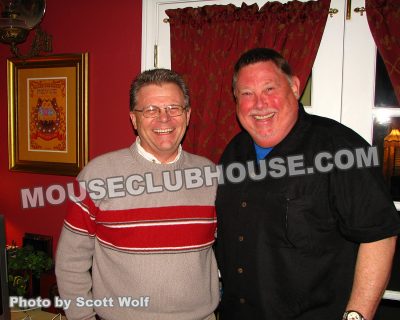

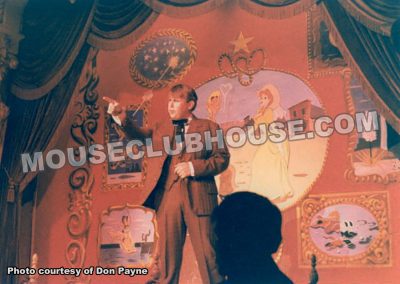
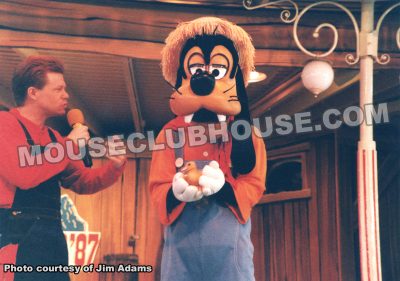
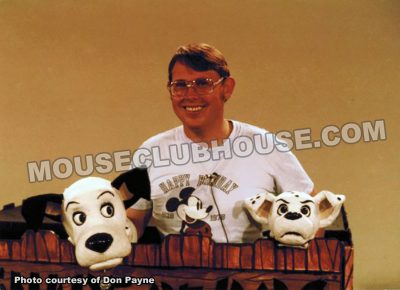
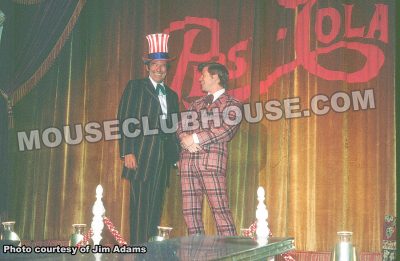

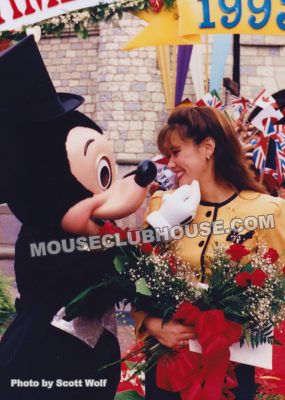
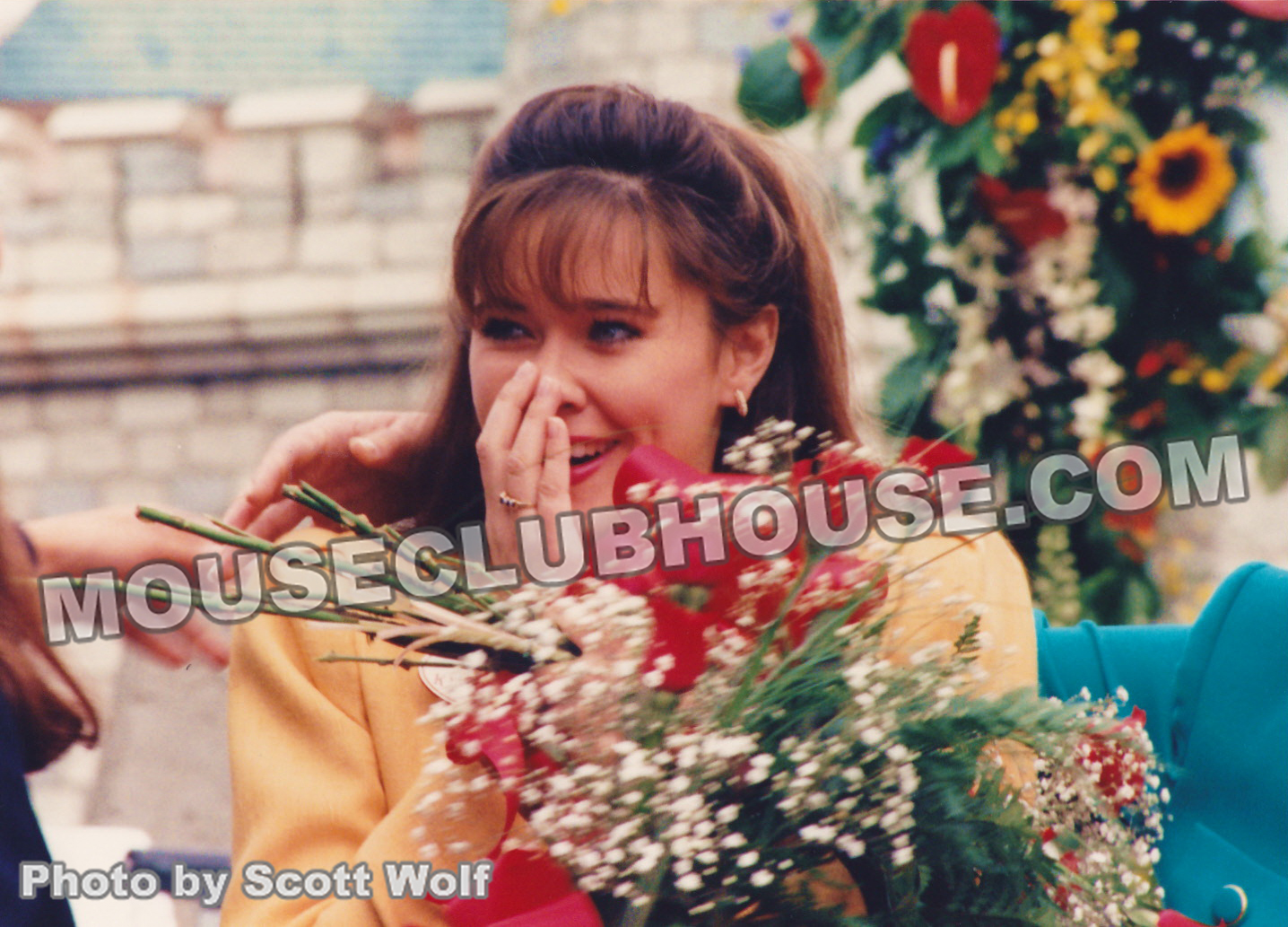
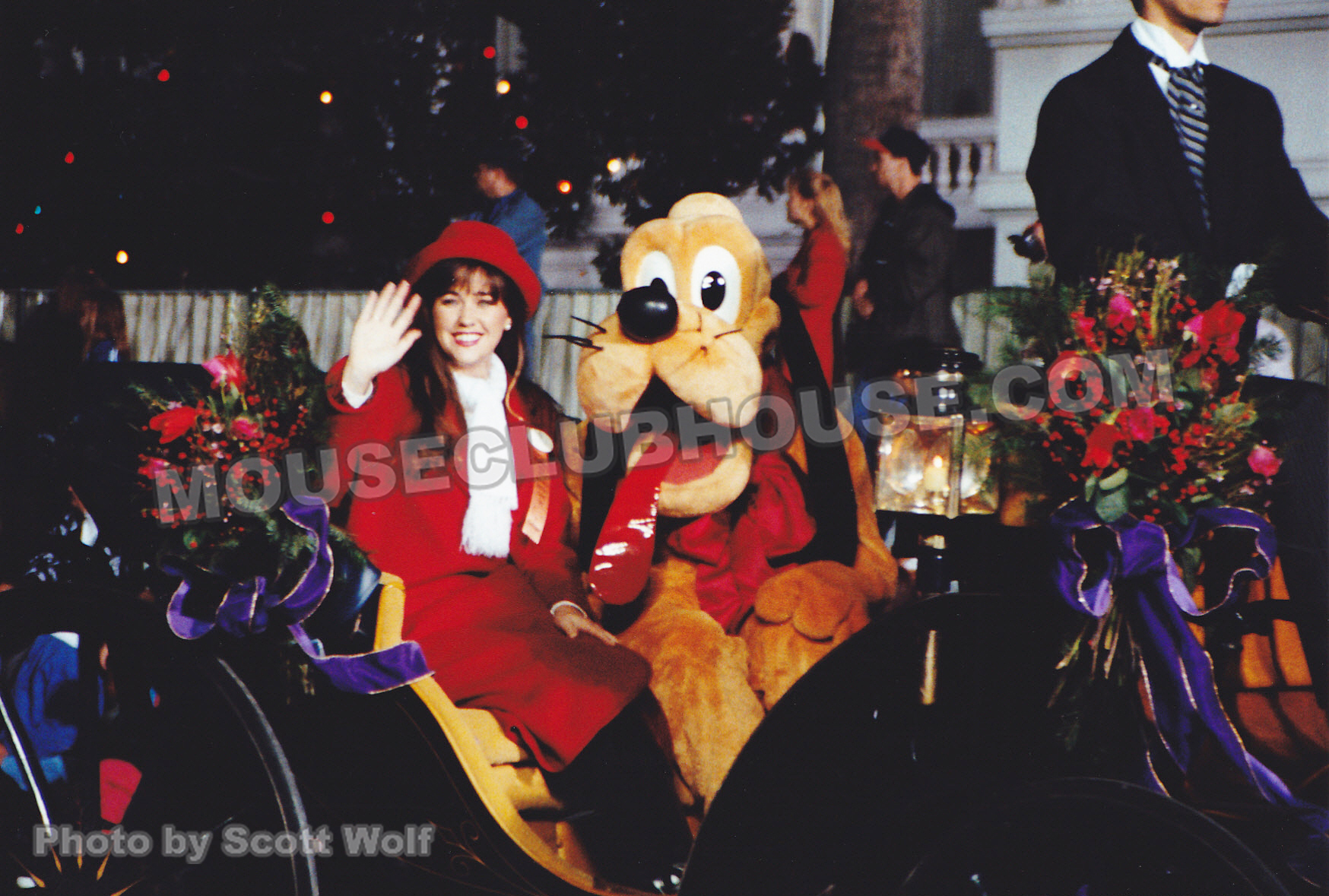
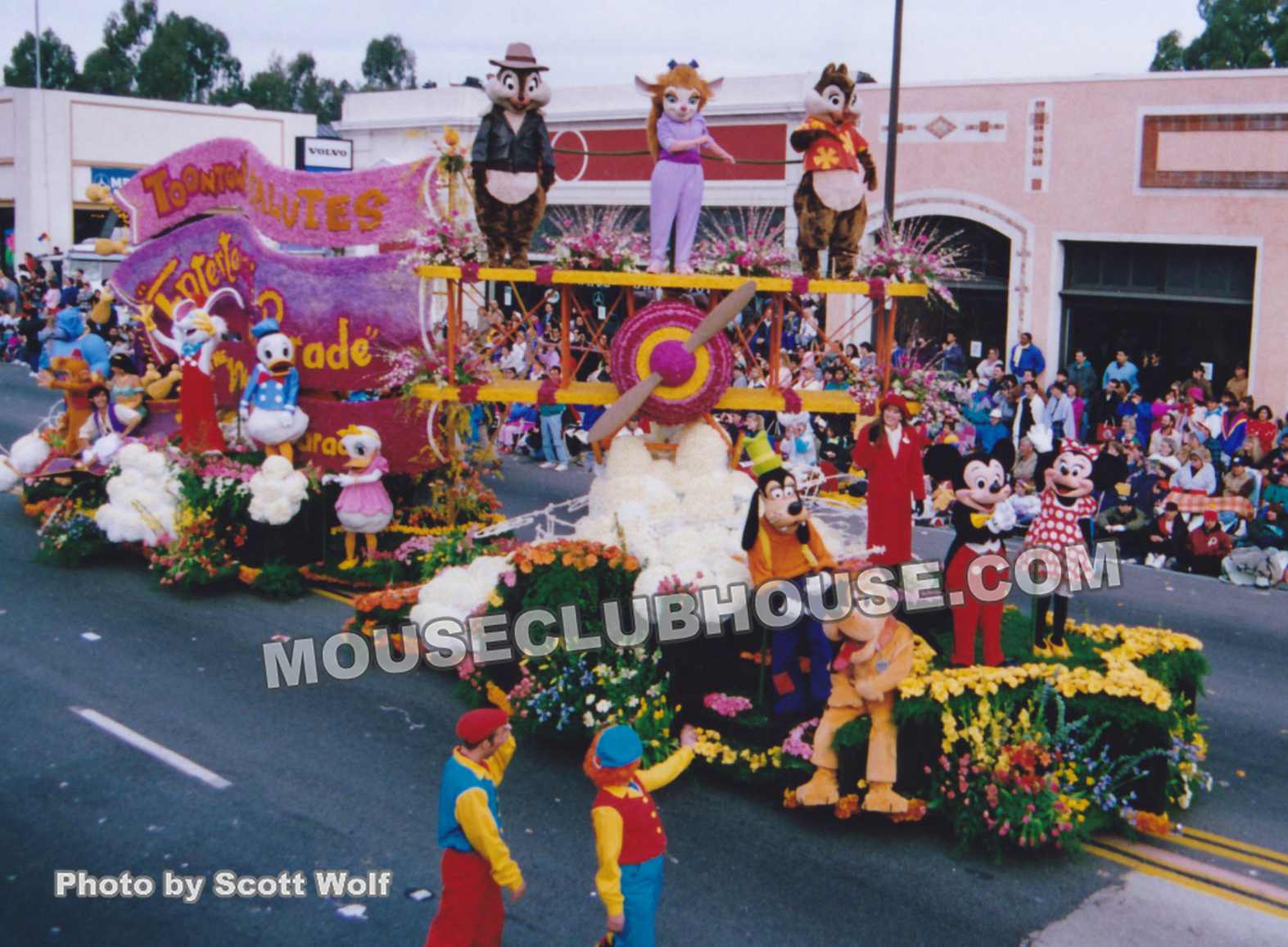
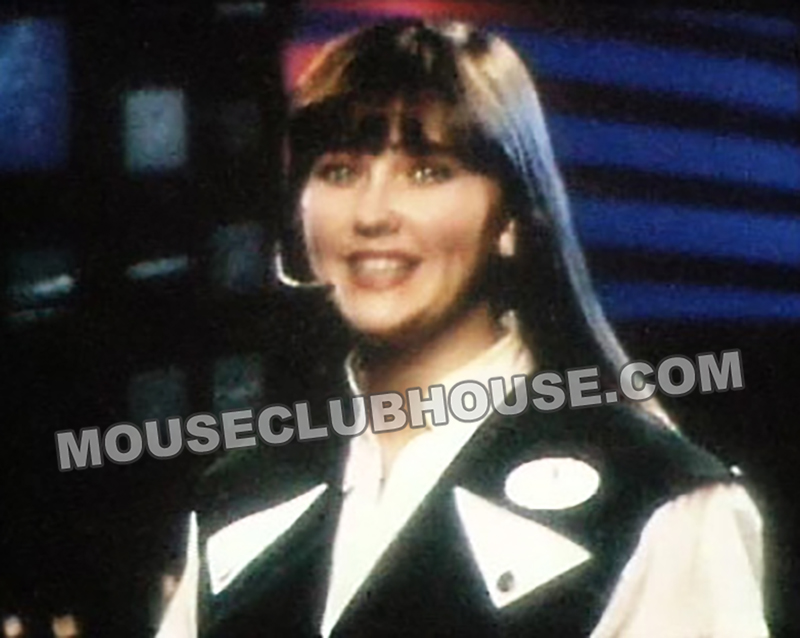
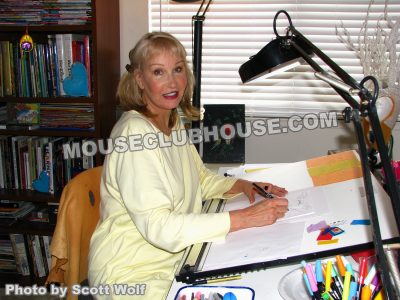

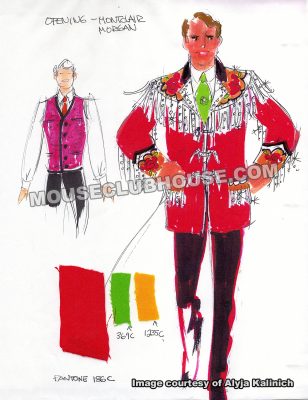
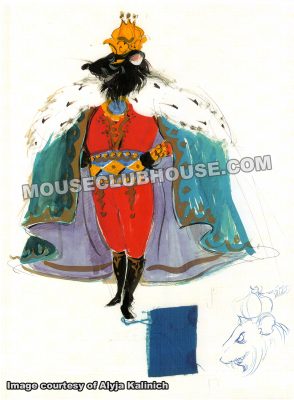 After that finished, I went looking around and found Disneyland and I thought, Well, okay, I’ll go by and check it out and see if there’s any design with sketching involved of any kind, because I could do interiors and all that.
After that finished, I went looking around and found Disneyland and I thought, Well, okay, I’ll go by and check it out and see if there’s any design with sketching involved of any kind, because I could do interiors and all that.